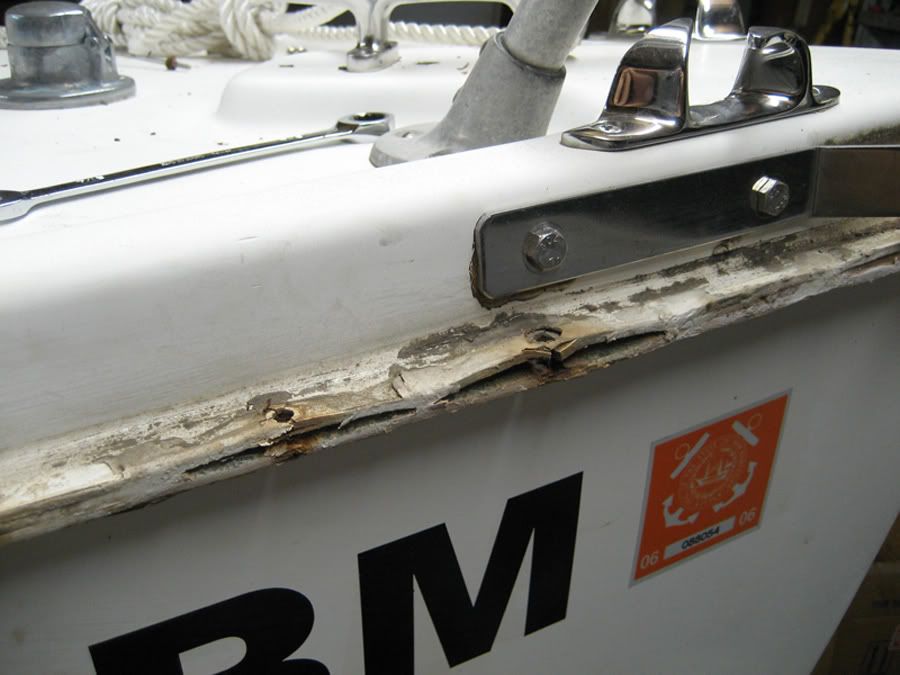
This is the joint prior to cleaning and riviting.
What sealant would be the best?
Should I drill out the rivits apply the sealant and then re-rivit?
There is a heavy vinyl molding that will be installed after the joint is sealed.

As you know the WC Tritons have outward turned flange hull and deck joints. I have been wanting to bolt them together using #10 bolts (1/4 inches are too thick for the small flange) 6 inches on center. Alternatively I can grind down the flange and glass them over like the way Hal Roth described in his books. I am curious which way will be a stronger joint. FYI. I don't have any leak problem (or at least don't think so). I would appreciate your thoughts.the fasteners are typically used more to secure the joint during curing, though they play a role in the long-term integrity of the joint as well--but they're not the primary means of security.
Just out of curiosity, why do you want to bolt your flange together? Are you questioning the overall strength or integrity of the joint? How is the joint currently secured?Triton106 wrote:As you know the WC Tritons have outward turned flange hull and deck joints. I have been wanting to bolt them together using #10 bolts Alternatively I can grind down the flange and glass them over like the way Hal Roth described in his books. I am curious which way will be a stronger joint. FYI. I don't have any leak problem (or at least don't think so).
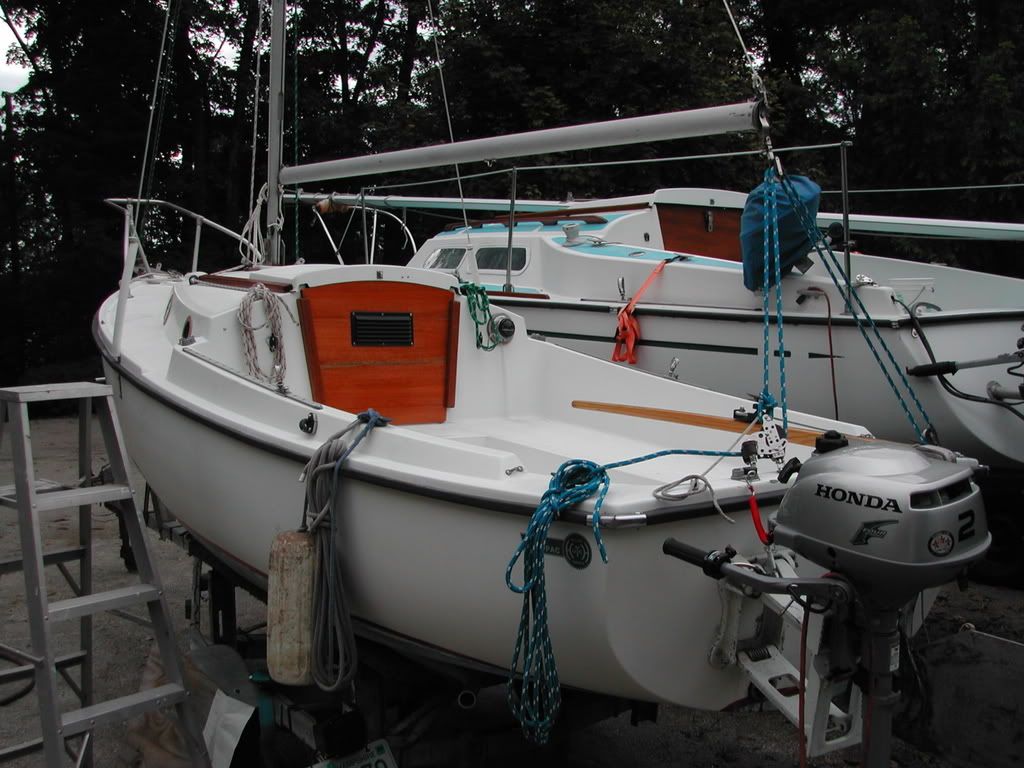

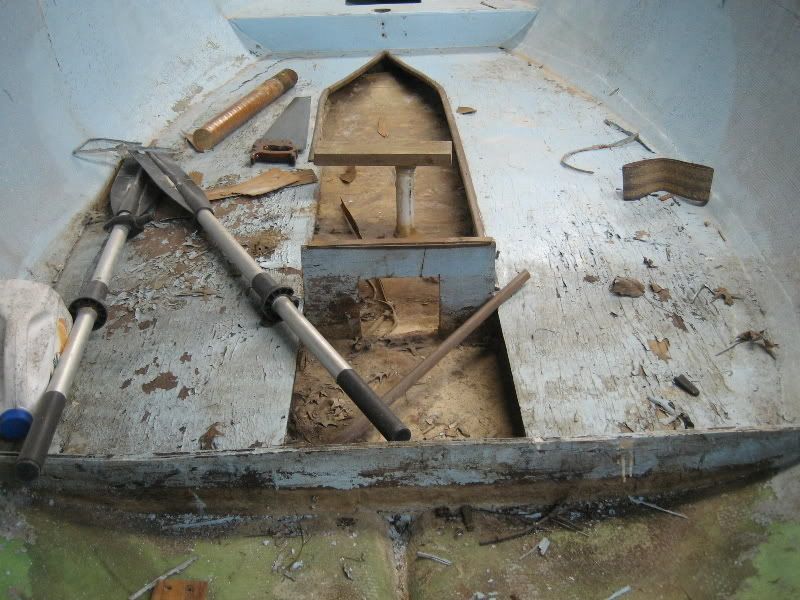
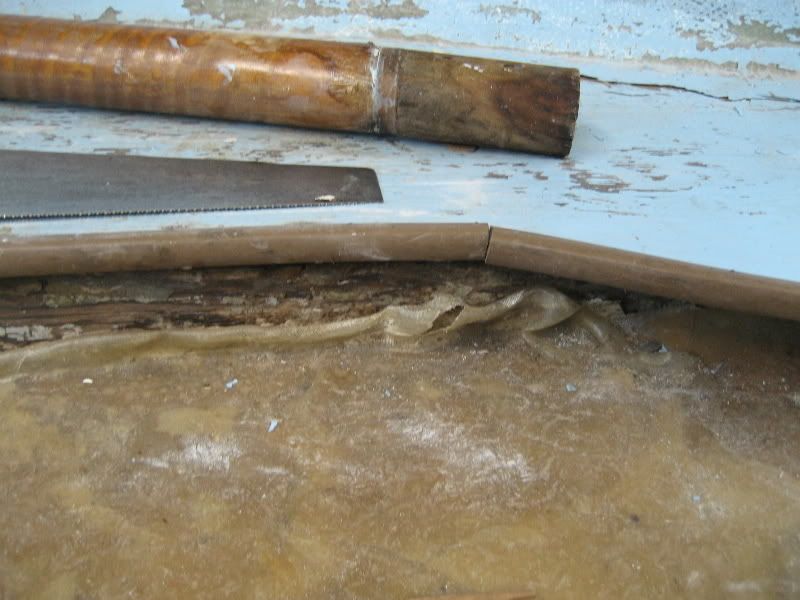
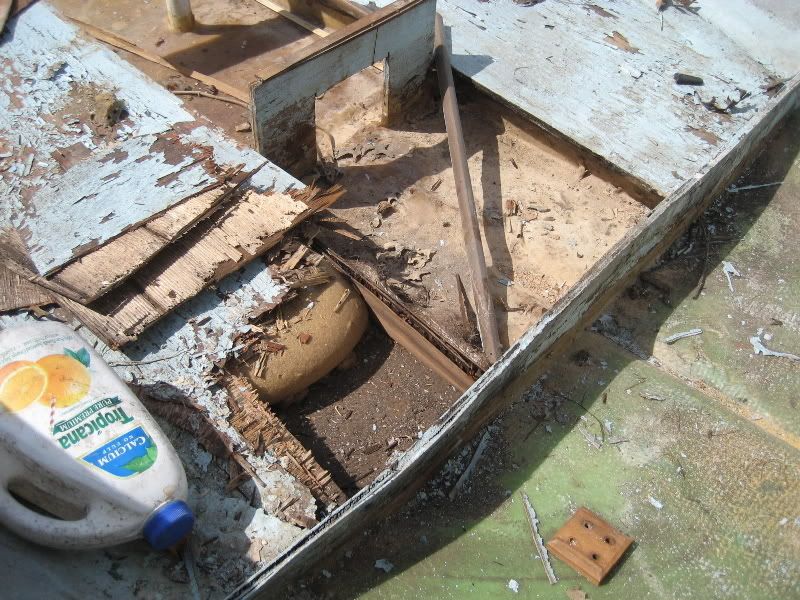
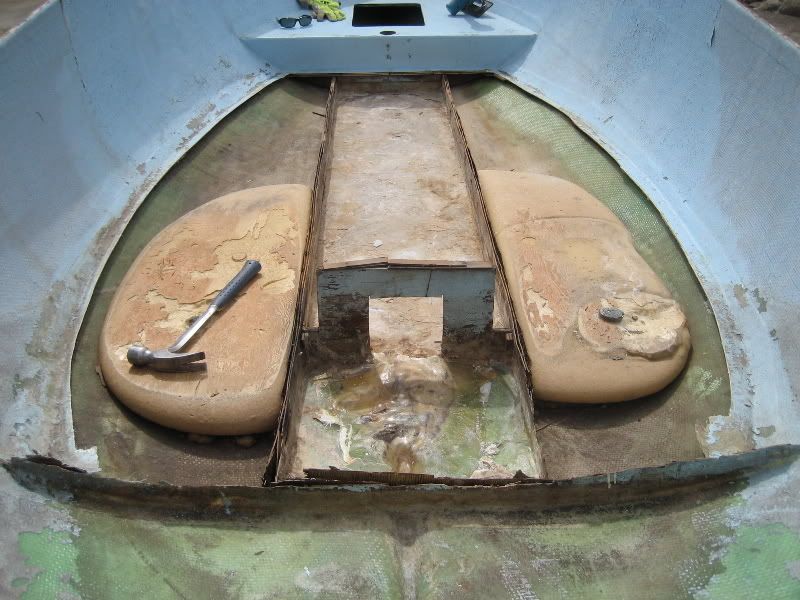
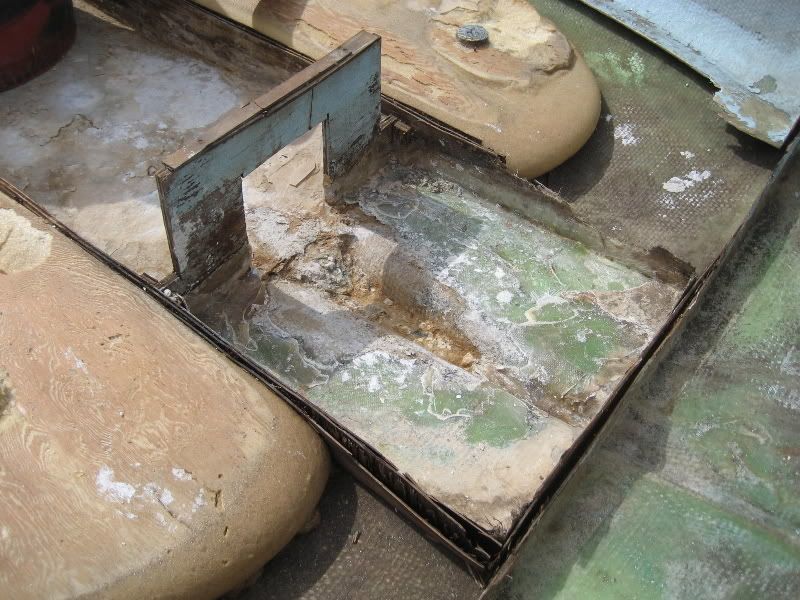
The west coast Tritons' hull and deck are glassed together from the inside. They actually did a very good job and that is why I have not had any issues with leaks (at least I am not aware of any). Since I plan to someday sail out of the gate I would like to strengthen the joint. One of the west coast Triton owner (Ray Alsup, Triton #256) mentioned on his website that he bolted hull and deck together to strengthen the joint. Sound like you prefer glassing them together from the outside.Just out of curiosity, why do you want to bolt your flange together? Are you questioning the overall strength or integrity of the joint? How is the joint currently secured?
If you want to eliminate the possibility of future leaks, as well as reinforce the joint, and don't mind a big job, then removing the flange and fiberglassing well onto the hull and deck is a good way to go. I don't see a lot of advantage to filling the existing flange full of boltholes at this stage. But maybe there's more to it than that.
Bolts or additional glass would strengthen it, but the real question is whether it's necessary or not, I guess.Triton106 wrote:Hi Tim,
You wrote:The west coast Tritons' hull and deck are glassed together from the inside. They actually did a very good job and that is why I have not had any issues with leaks (at least I am not aware of any). Since I plan to someday sail out of the gate I would like to strengthen the joint. One of the west coast Triton owner (Ray Alsup, Triton #256) mentioned on his website that he bolted hull and deck together to strengthen the joint. Sound like you prefer glassing them together from the outside.Just out of curiosity, why do you want to bolt your flange together? Are you questioning the overall strength or integrity of the joint? How is the joint currently secured?
If you want to eliminate the possibility of future leaks, as well as reinforce the joint, and don't mind a big job, then removing the flange and fiberglassing well onto the hull and deck is a good way to go. I don't see a lot of advantage to filling the existing flange full of boltholes at this stage. But maybe there's more to it than that.
Thanks for your advice.
Regards,